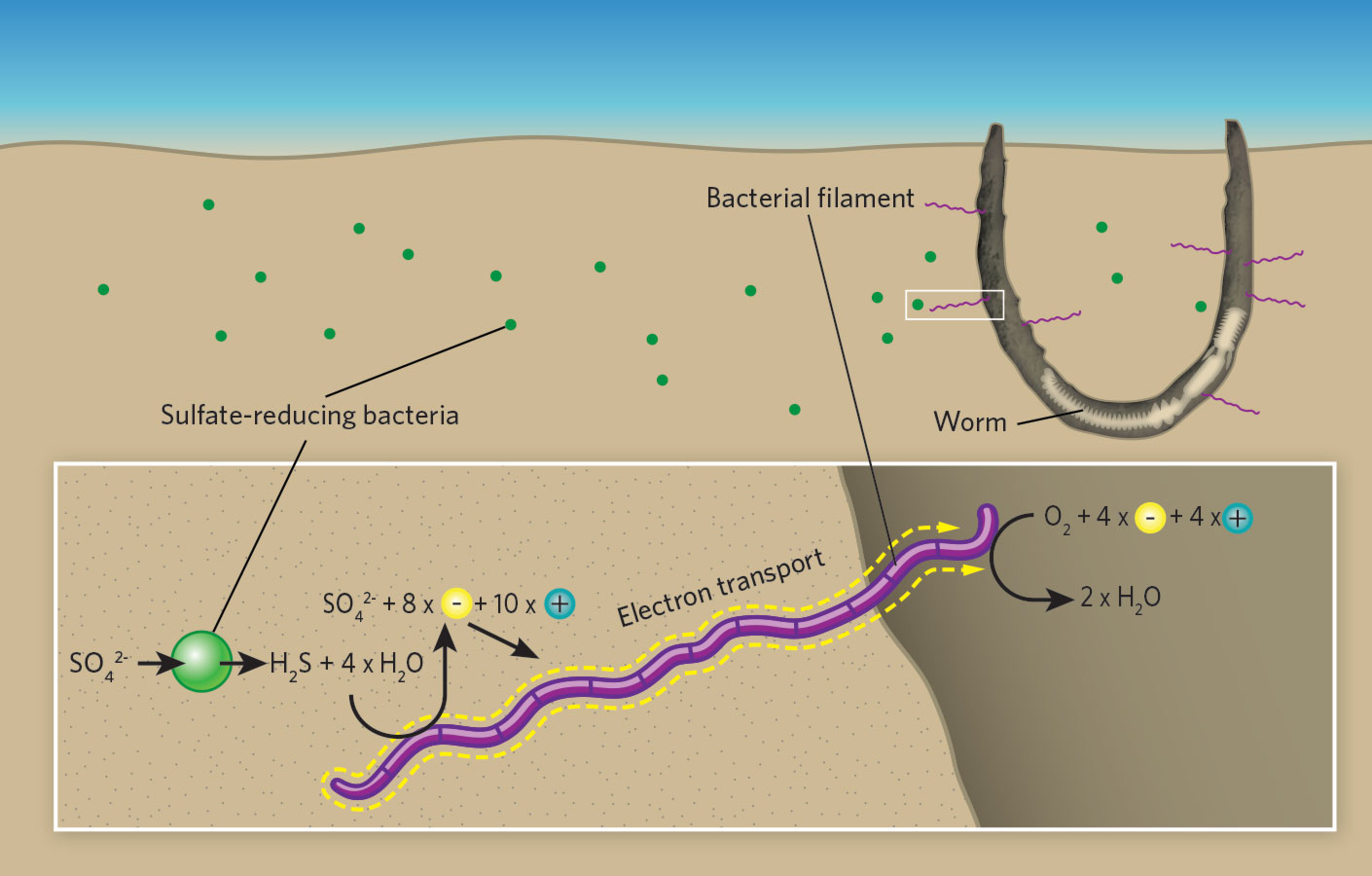Worm tubes as conduits for the electrogenic microbial grid in marine sediments
Robert C. Aller*, Josephine Y. Aller, Qingzhi Zhu, Christina Heilbrun, Isaac Klingensmith and Aleya Kaushik†
School of Marine and Atmospheric Sciences, Stony Brook University, Stony Brook, NY 11794, USA.
↵*Corresponding author. Email: robert.aller@stonybrook.edu
↵† Present address: NOAA, Global Monitoring Division, Boulder, CO 80305, USA.
Science Advances 17 Jul 2019: Vol. 5, no. 7, eaaw3651

Abstract
Electrogenic cable bacteria can couple spatially separated redox reaction zones in marine sediments using multicellular filaments as electron conductors. Reported as generally absent from disturbed sediments, we have found subsurface cable aggregations associated with tubes of the parchment worm Chaetopterus variopedatus in otherwise intensely bioturbated deposits. Cable bacteria tap into tubes, which act as oxygenated conduits, creating a three-dimensional conducting network extending decimeters into sulfidic deposits. By elevating pH, promoting Mn, Fe-oxide precipitation in tube linings, and depleting S around tubes, they enhance tube preservation and favorable biogeochemical conditions within the tube. The presence of disseminated filaments a few cells in length away from oxygenated interfaces and the reported ability of cable bacteria to use a range of redox reaction couples suggest that these microbes are ubiquitous facultative opportunists and that long filaments are an end-member morphological adaptation to relatively stable redox domains.
FREE PDF GRATIS: Science Advances Sup. Info.







